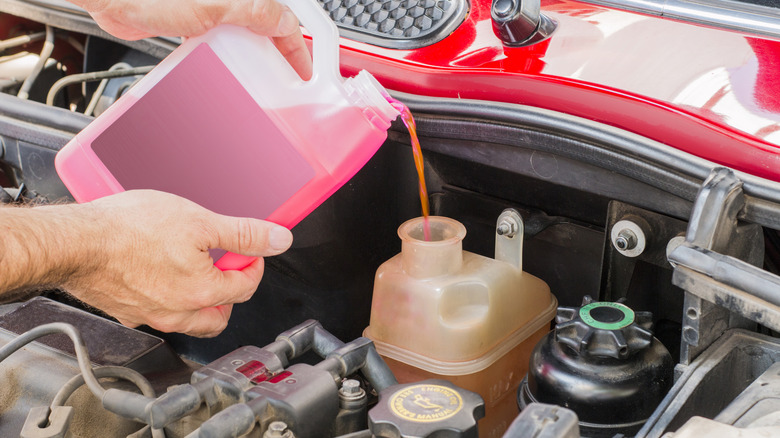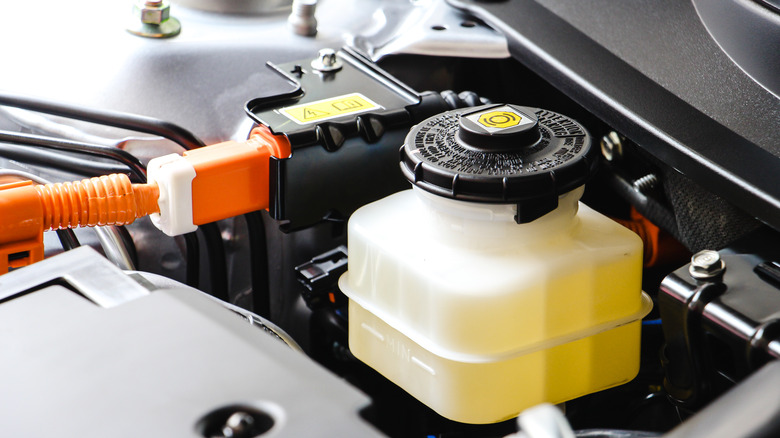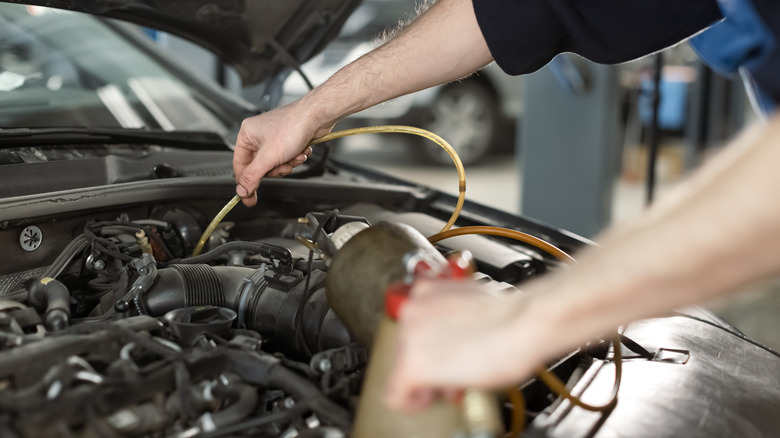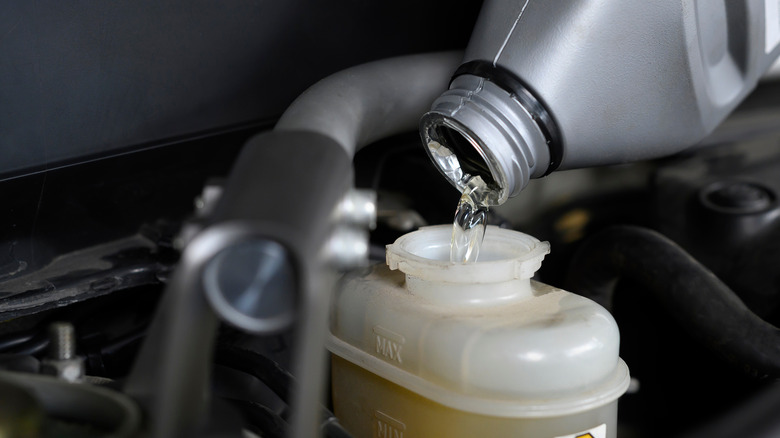The Right Way To Dispose Of Brake Fluid
One of the hardest parts about owning a vehicle is maintaining all of its internal systems. The brake system, in particular, is vital to your car's functionality, and without proper care, it can cost you a fortune. This means that you'll need to use brake fluid to keep it running smoothly. When it comes time to dispose of the fluid, it's important to know how to do it right — careless disposal can lead to fines and penalties since the fluid contains toxic elements that can be hazardous to the environment.
Though not volatile, this liquid is flammable and will likely burn and contribute to fire when exposed. When disposing of brake fluid, HazChem Environmental says to resist the urge to pour it down the drain, flush it down the toilet, or mix it with new fluid. According to Automobile Writer, reusing brake fluid can also be harmful to your car, as it allows for the absorption of moisture from the atmosphere, leading to corrosion on the cylinders and steel brake lines. So how do you go about getting rid of the brake fluid? Dive in to find out.
Disposal at home
When disposing of small amounts of brake fluid, you don't always need to seek professional help. Many times, it's easiest to do it yourself. Dispose of your brake fluid in your own home with the following steps, as outlined by Brake Experts.
The first step is to collect the old fluid from your car. Once you have secured your used brake fluid, pour it over a pan of cat litter. Leave the litter and fluid mixture uncovered, and let it sit for three to four days so that the liquid can evaporate. Remember to keep it from exposure to fire because the liquid is highly flammable. Also, be sure to leave the mixture out of reach of pets and children to avoid ingestion. Once the mixture has completely dried, you can put it in a tightly tied trash bag and dispose of it like you would regular trash.
Waste management center disposal
Are you wondering how to dispose of your brake fluid in large amounts? A waste management facility center is the right place to go. According to Brake Experts, you can dispose of large amounts of fluid with the following steps.
The first step is to find a facility and confirm that they accept hazardous waste. It is crucial to make sure they specifically accept brake fluid first by calling or checking on their website.
Also, ask the management center how they go about the transportation of the fluid. Do they send over pickups, or do you deliver it yourself? Most often, you will need to drop it off yourself. After you have your answers, prepare for disposal. Before dropping off, tightly seal the fluid in a container to avoid spilling. Some facilities will charge a fee for the disposal, so check the cost before preparing the delivery.
Recycle the brake fluid
If your fluid is uncontaminated, meaning it hasn't been used or mixed with toxic solvents in your car, it can be recycled. A local recycling facility will accept the brake fluid and repurpose it for future use. According to Recycle Nation, you can transport the liquid to a recycling facility in the following steps.
Like waste management disposal, do your research on the recycling facility close to you. Check if your county has one and look at their policies. Confirm whether they accept the brake fluid.
Before you embark on the trip to the facility, ensure you store the fluid in a container and seal it appropriately. Some places accept only certain types of containers, so make sure to fulfill any requirements before the drop-off.
The last step is to confirm the collection days. Call to ask about when the facility accepts materials for recycling. Keep in mind that while some centers offer free collection days, others do it at a fee. You can always check their website for all the information needed.



